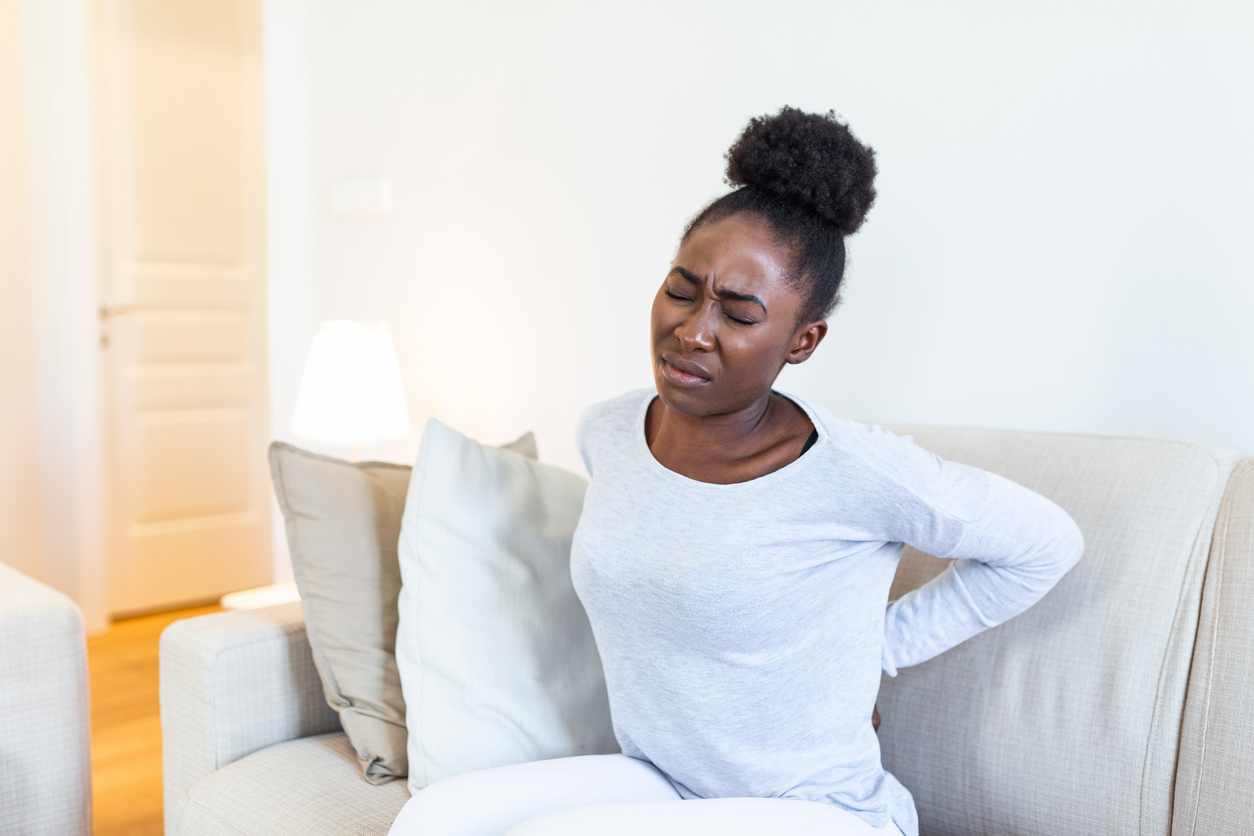When the pandemic first struck, many of us found ourselves working from home for the very first time. So, we got creative and turned parts of our homes into workspaces. From ironing-board desks to working in bed, we’ve done it all. But have you ever wondered what 9 months of working like this for hours on end each day could be doing to your back?
Choose the working from home setup that best matches yours to find out.
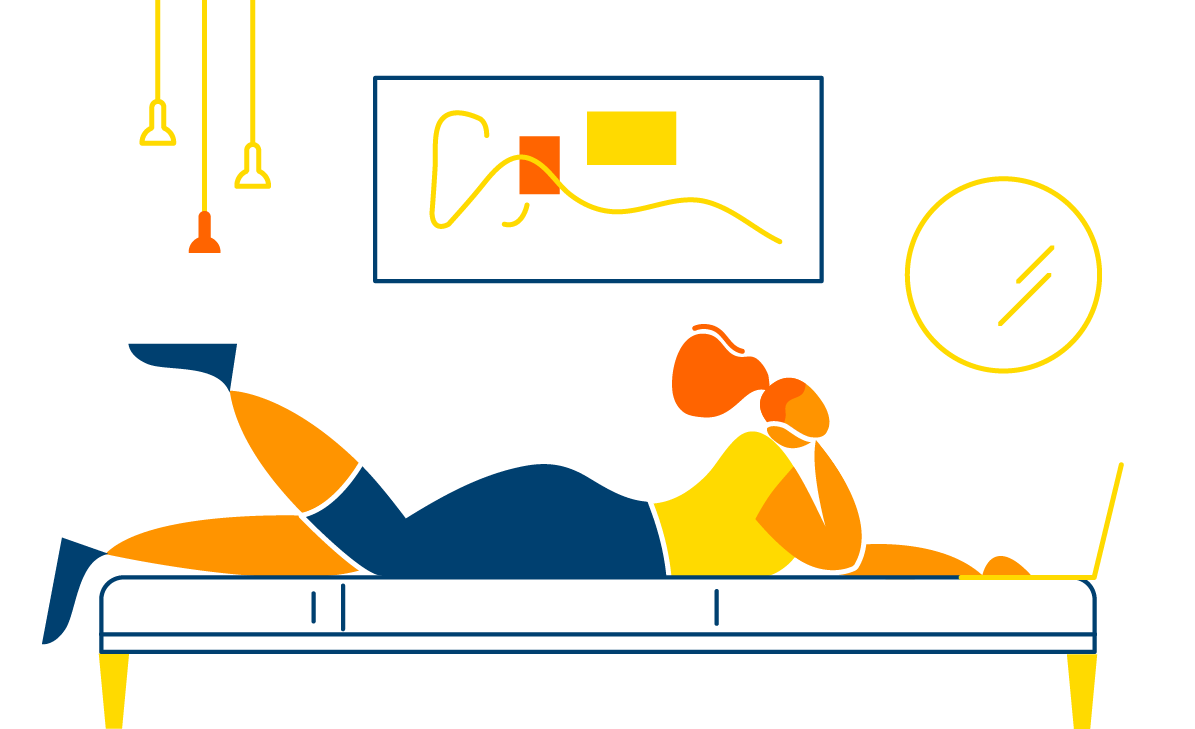
Lying on your tummy
Impact on your back
It’s thought that lying on your tummy for long periods of time can reverse the spine’s normal curves – and this may lead to back problems over time. But this work position doesn’t just affect your back, it can also strain your neck and shoulders because we tend to stretch out our necks and raise our shoulders when lying on our stomachs.
Quick fix
If you tend to lie on your belly because you work from your bed or sofa, flip yourself around, so you’re always sitting, rather than lying down. Rest your back on pillows placed on a wall or headboard. And if your bed or sofa is very soft, it’s best to move to a more firm seat.
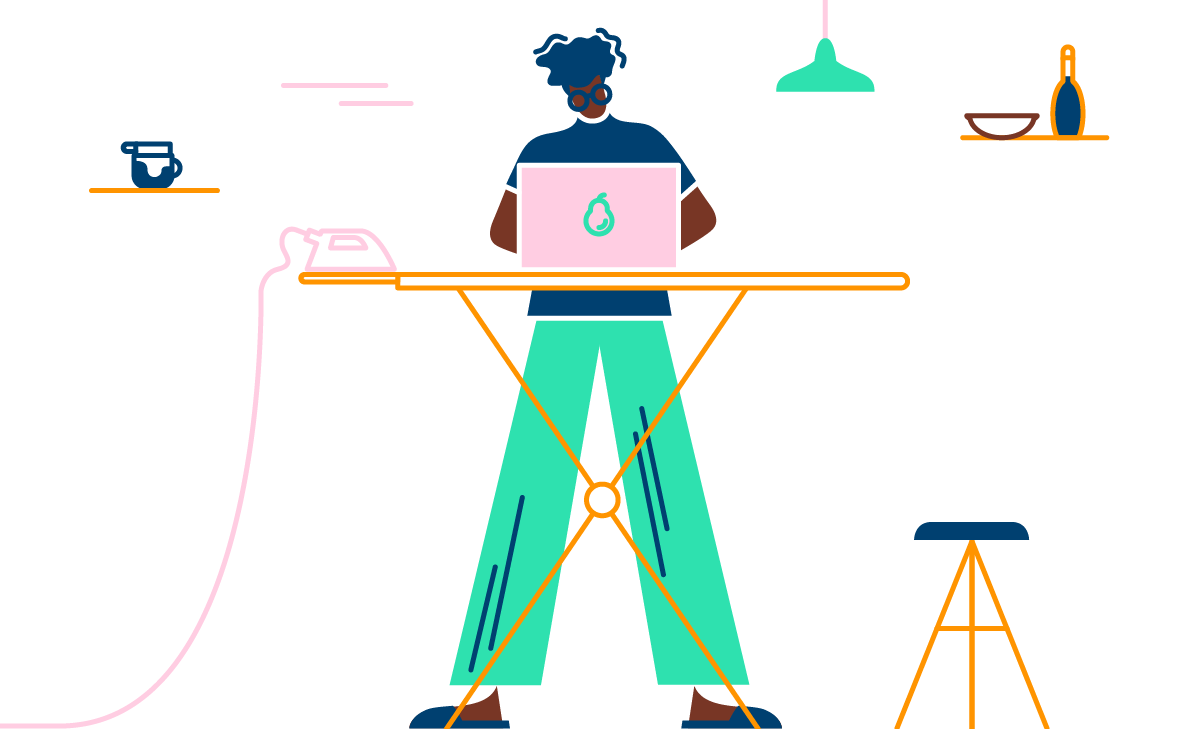
Standing up
Impact on your back
Experts agree that standing up puts less pressure on your spine than sitting down. In fact, sitting is said to place up to 40 to 90% more stress on your back than standing, so if you tend to stand during the day you’re on to something good.
But you shouldn’t do it for too long every day because you can overload and tire your muscles, leading to back pain, sore feet, varicose veins and a whole host of other health problems.
Quick fix
Take regular breaks from standing to reduce the strain on your muscles. If your floors are hard, consider using an anti-fatigue mat – these are mats that are designed to reduce the muscle tiredness caused by standing on a hard surface for a long time.
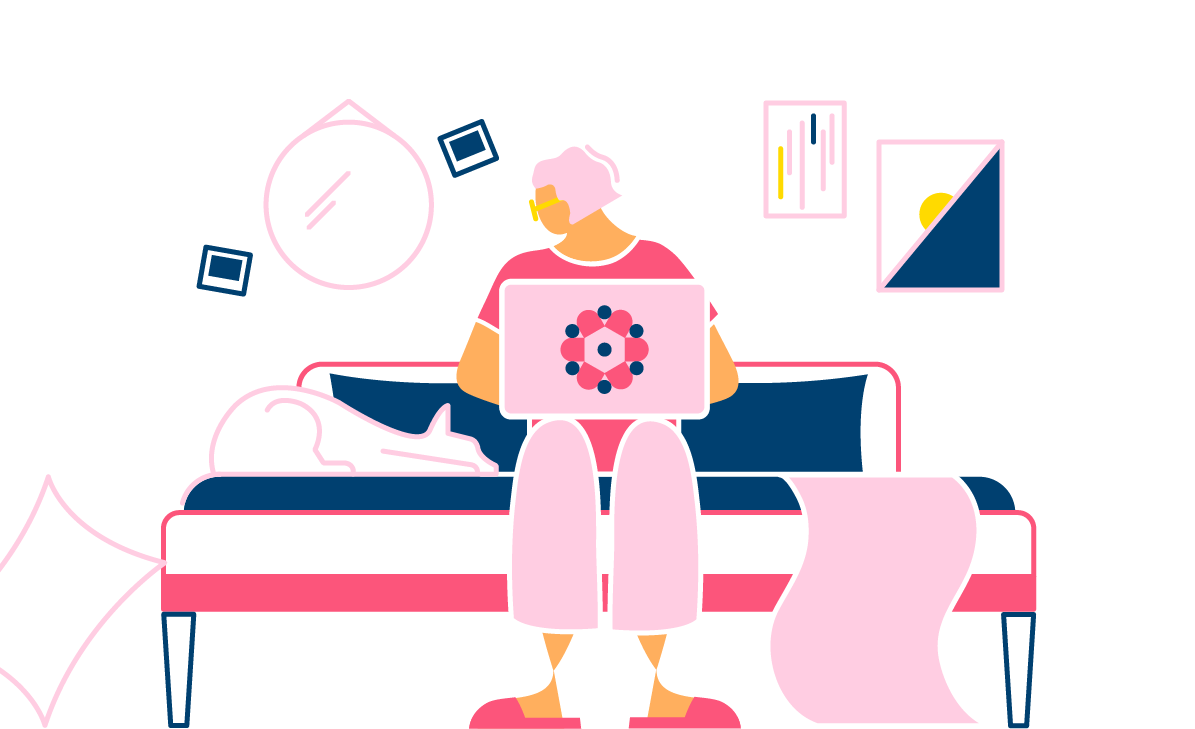
Sitting in bed or on the sofa
Impact on your back
Sitting on a soft surface may feel comfortable, but doing so for too long can make your body sink down. As this happens, the blood flow to your back and bottom falls, skin temperature rises and your thighs get squashed. These factors combine to increase discomfort.
Quick fix
You don’t have to banish yourself to a rock hard chair, just take care to avoid too much cushioning wherever you’re sitting. Your seat should be firmer and thicker in back and less firm and thinner at front.
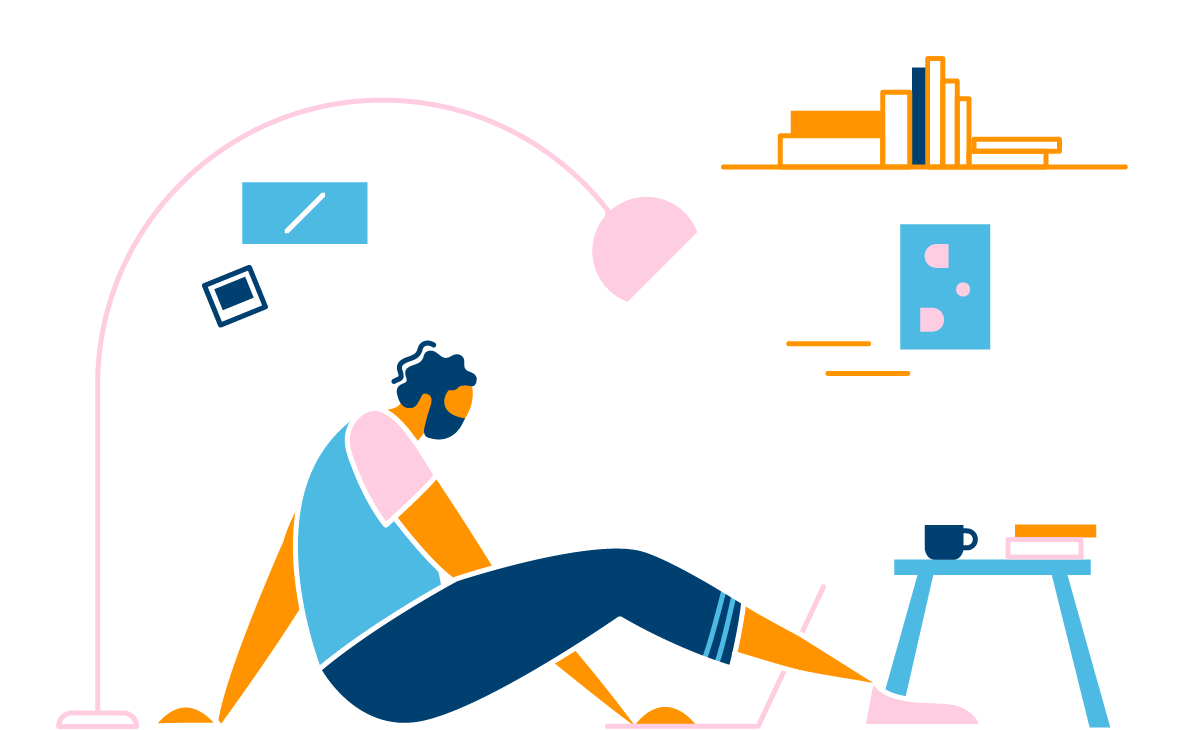
No back support
Impact on your back
If you tend to turn any horizontal surface into a seat – stop. When we sit down for a long time, we usually start slouching forward. This can spell bad news for backs because slouching pushes the lower back out, causing strain.
Quick fix
Avoid the temptation to work without a back support for more than a few minutes. You don’t need a special office chair to achieve this. Just make sure you sit with your back against a firm surface. If your lower back needs extra support, use a towel or small pillow. Also remember that sitting for too long can put pressure on your lower back, so get up and stretch your legs every 30 to 60 minutes.
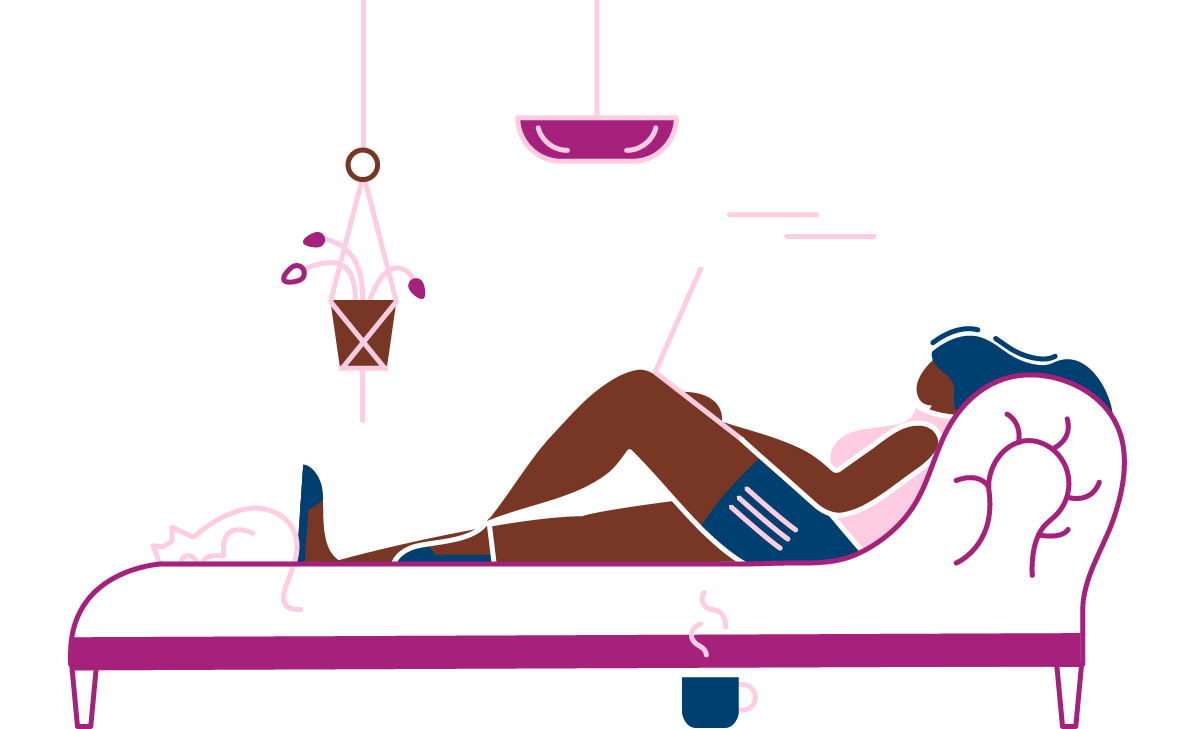
Hunched or slumped over your computer in any spot you can find
Impact on your back
Slumping or hunching over while you work may be quietly taking its toll on your back. That’s because slumping for a long time can put extra strain on your back muscles, reduce oxygen flow to those muscles and increase pressure inside your vertebral discs.
Quick fix
Slumping or hunching is usually a habit, and this is good news because habits can be changed with time and awareness. Try setting a posture alarm to go off at regular intervals during your working day. Use it as a reminder to check your posture and sit up if you’ve started slumping.
And if you’re already feeling the effects of working from home on your back, it’s not too late to do something about it. Download the Healthily app and head over to our Back Pain Hub to discover how to beat back pain and get back into action today.





